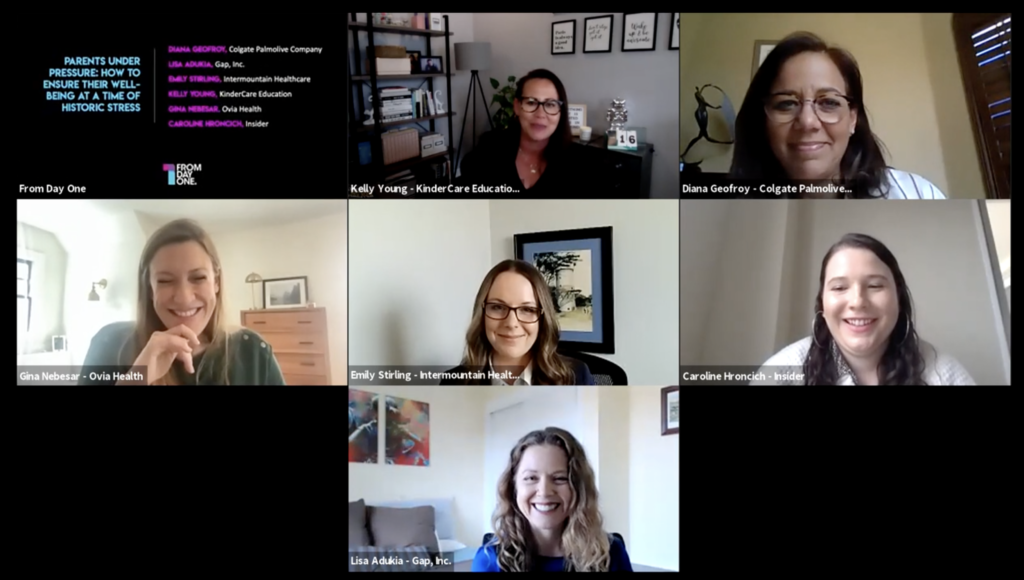Skills-Based Hiring: Getting Started and Overcoming Common Objections
It’s never been easier to put skills-based hiring into practice. The tools and the resources are there–and the potential benefits are abundant. And yet, some leaders and hiring managers are skeptical.“One of the major positives about the skills-based approach is that it adds more science and rigor to the hiring process,” said Christopher Rotolo, vice president of global talent at Mitek. Adding science, Rotolo says, adds objectivity, which can remove some of the bias and “increase the validity of the whole hiring process.”“The fact is that over 60% of people don’t have a college degree. But that hasn’t stopped employers from benchmarking candidates that way,” said moderator Lydia Dishman, senior editor for growth and engagement at Fast Company. Dishman moderated a panel of leaders during From Day One’s recent webinar about Skills-Based Hiring: Getting Started and Overcoming Uncommon Objections.Unconscious bias can easily creep into the hiring process when looking at a candidate’s resume, which can reveal indicators like elite educational opportunities, prestige, race, and even generational wealth, none of which are necessarily predictors of career success. Hiring almost exclusively on skill can help employers dial into what really matters.Rather than focusing on degrees, says Amanda Richardson, CEO and head of people at CoderPad, “You have to dissect the role into the skills that are needed, working with the hiring manager and people who are currently in the role. The most important part of the conversation is not just ‘What are the skills?’ but ‘What does good look like?’” This approach requires more in-depth conversations between hiring managers and department leaders to get a stronger sense of not only what success looks like, but how previous successes can be communicated during the interview process.“I find that taking a practical approach [means] literally saying, ‘What does a great answer sound like? Does this person really know what they're talking about?’” said Stacey Olive, VP of talent acquisition and employer branding for Medidata, Dassault Systemes.“Because there’s not an empirical objective test for everything, we really have to go based on our conversations with people.” This means hiring managers need to prepare upfront so they can infer if they’re hearing “flowery language” merely alluding to past success, or if a candidate actually has lived experience that will be beneficial to the role.Focusing on skills-based hiring isn’t just a great way to reduce unconscious bias, it can also make the hiring process quicker. “A little bit of upfront work on understanding and aligning on the skills and the level of the skills needed will actually make a much faster hiring experience,” Richardson said.Semoneel Bamboat, VP and global head of diversity, inclusion and talent acquisition at Capri Holdings, shares that while her organization has a rubric within which they score talent competencies on a scale of one to five, her team does not let the skill scoring fully dictate the conversation.“While we have numbers and rigor around it, nothing is set in stone,” she said. “The purpose of that really is so we can cast this wide net. We don’t want to be that specific, because we don’t want to then lose sight of someone that might not fit that exactly.” Skills-forward hiring should be used to identify previously untapped candidates, not a blanket way to eliminate unusual or creative choices that could be an interesting fit.Richardson adds that getting too technical in the taxonomy can overwhelm the conversation, especially as hiring managers try to parse the subtleties between junior and senior versions of the same role. “I've seen the situation where developers start arguing about the nuances of ‘What does it mean to be very proficient versus mildly proficient?’ And I think you can lose the forest for the trees pretty quickly.”Copying and pasting old job descriptions when looking to fill a role is no longer enough. Instead, there should be periodic check-ins to make sure descriptions are up-to-date as the nature of the work, and therefore the role, continues to evolve. Part of this can be solved by shortening and simplifying the job listing. “It tends to be a lengthy laundry list of desires and needs. Instead, employers should aim to distill it into ‘What is the required skill for success?’” Olive said.With an eye toward DEI, Bamboat’s organization uses short external job listings with neutral language, keeping the more elaborate and specific job description for internal use only among the hiring team. “We take a lot of the details out to be able to cast that wide net,” she said.“We never want to post the exact job and be very specific about those requirements, because we feel like we’re decreasing our talent pool.” Bamboat shared the well-known study that showed women tend to only apply for jobs where they feel they will fit every single benchmark. Shortening the list of requirements can make it more inclusive. Once candidates make it to the interview phase, the hiring manager can discuss the specific details from the full listing to gauge if it’s a fit.In conversation moderated by Lydia Dishman of Fast Company, the panelists discussed the topic “Skills-Based Hiring: Getting Started and Overcoming Common Objections” (photo by From Day One)Pamela Rodas, global senior director of talent acquisition at Telus International, hires for a company with more than 3,000 types of job profiles, all of which are changing rapidly as her organization embraces hybrid workplaces and remote opportunities. In turn, she and her team must change how they assess skills. For example, her newer sales development hires may not have been exposed to an in-person environment where they could hone their technique. Therefore, she finds herself hiring more for soft skills or what Dishman prefers to call power skills, especially as the post-pandemic corporate environment has higher than ever expectations. “All of our clients want to go faster. So forget about skills, do you know how to do the job and do it in less time?” Rodas said.Trying to identify those more amorphous qualities, like being a fast learner, in a candidate can be a challenge. Panelists offered two solutions. The first is reviewing case studies. “To identify these characteristics that lead to outstanding performance, you study what those outstanding performers do,” Rotolo said.The second, is conducting actual testing during the hiring process. “Work simulations can be helpful, whether that means programming together for two hours or sitting and doing a sales demo. What are those real-world experiences where you can actually test the proof points?” Richardson said. Just having a great conversation in an interview is not necessarily enough.But the interview process can still be helpful if you are asking the right questions. “The research still says that behaviorally based questions are the most valid. And there’s really two types: ‘Tell me about a time when’’ past experiences, or situational questions,” Rotolo said.Rodas believes it’s also important to have an honest conversation about the nature of the role and pay attention to the applicant’s response. “The recruiter can [now] spend more time with the candidate talking about how they would endure the type of workload we’re going to put on them. In any type of business today, that’s worth 10 times more,” she said.This also means asking the right questions internally too, to ensure there is no unconscious bias at play and that a candidate’s competency is still at the forefront. “We have an opportunity now to ask [hiring managers], ‘What's the basis of your decision?’” Olive said. “You have to understand and politely point out where you think you see bias happening.”Katie Chambers is a freelance writer and award-winning communications executive with a lifelong commitment to supporting artists and advocating for inclusion. Her work has been seen in HuffPost, Honeysuckle Magazine, and several printed essay collections, among others, and she has appeared on Cheddar News, iWomanTV, and CBS New York.





